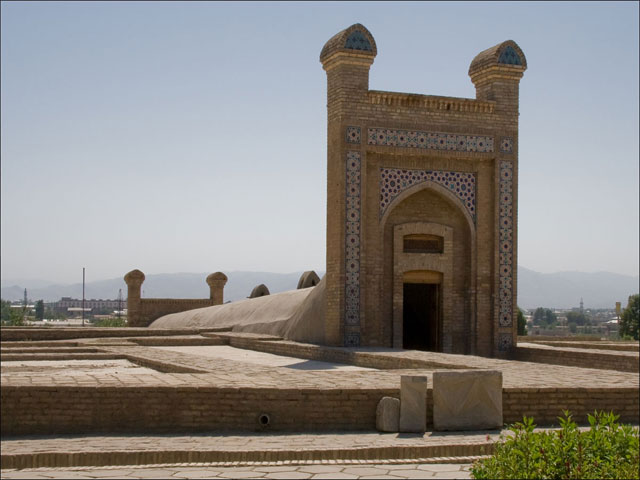The majestic building of the largest and best equipped observatory of the Middle Ages was erected by order of Ulugbek on the Kuhak hill in 1428-1429.
The observatory was built in the form of a cylinder, 30.4 m high and 46.4 m in diameter. The three-storey construction had a gigantic marble sextant with the exceptional radius of 40.21 m to measure coordinates of the Sun, Moon and other planets. The sextant was found during archaeological excavations and appeared to remain well-preserved. Its arc is of one sixth of a circle (600).
The arc of the sextant is limited by two barriers tiled with marble. The sextant is precisely oriented towards the meridian. Points and digits are carved on the marble surface to indicate degrees of the circle.
Azimuthal observations were carried out on the horizontal circle at the top of the building, with other instruments that have not been preserved. In the observatory, there were also small-sized measuring instruments: a sundial, a sidereal clock, astrolabes, armillary spheres, and others.
The observatory used to have big halls and plenty of big and small rooms. According to Abd ar-Razzak Samarkandi and Bobur, the interior walls of the observatory were decorated with illustrations of nine skies, nine coelospheres with degrees and minutes, seven planets, fixed stars and the globe divided into climatic zones, with mountains, seas, deserts and others.
One of the most prominent achievements of Samarkand astronomers was the edition of “The Ulugbek Zij” and "The Gurkhani Zij”. This catalogue is of particular value because it contains charts describing 1,018 stars. Samarkand astronomers were working on these charts for a long period of time and finished them in 1437.























